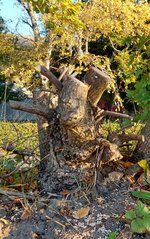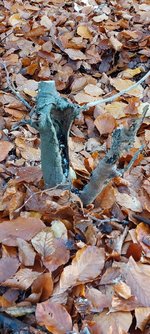I’m confused

. But that’s east to accomplish . I see these 2 definitions of cross talk . Electronic I understand . The biological seems somewhat vague . In actual applications . Where are you guys getting the plant based info from. Or exactly what are you referring to as cross-talk in a plant WGW . Statement seems to make sense to me . But I’m unclear what exactly is cross talking with what . I do think there is a lot we don’t understand about plants . And several un proven thearies on what takes place . Like dormancy . My understanding is you take a maple and put it in the cold and dark . And it will not stay dormant beyond a certain point in time . Adding another stat to the equation . As to what starts and ends dormancy . Of course there are thearies .
Next time, shoot me a PM ;-)
Biological crosstalk is vague because most people don't know half of the terms of a sentence. And that's perfectly normal if you haven't studied biology or biochemistry.
In short, plant cross talk is used to define interactions between hormones. For example: one tells them to grow long, the other tells them to grow wide. In a perfect system this would create a bush, with bushy branches and bushy roots. But because one hormone is sometimes more present than the other, we get different kinds of growths. Like balancing a scale blindfolded, there's always one side leaning a lil further down than the other (and this is where cross talk falls short to explain the tilt, because hormones travel in minutes and plant responses take weeks). The long held idea was that the growing tip of a shoot produced auxin, a hormone that also fuels root production and shoot elongation. Its counter hormone is cytokinin, a hormone that's essential for branching and 'going horizontal', mainly originating from the root system. One counters the other and vice versa.
These hormones were thought to be produced on opposite ends of the plant, and travel against the flow of the sap (sometimes). But more recent studies have found that they're also produced on the spot, work with or against another on the spot, and don't always require miles of vascular transportation.
This means that the idea of "shoots talking to roots and roots talking to shoots" isn't as solid as we thought it was. In the bonsai world though, it takes a couple decades for people to adjust their theories because they're based on hearsay and sometimes myths.
It does mean that you'll steal the show if you say stuff like "well, yeah this branch didn't grow because of the cross talk, ya know."
I can go over the details for hours, but this should broadly cover it.
There is a pdf circulating on the internet that contains an older version of Plant Physiology by Taiz et all. It's on some US university website somewhere. If you google for "plant physiology taiz .pdf" you should be able to find it. It is outdated, but it's free and contains basically everything plant physiology related known to science at that time. It starts off with some heavy DNA and protein stuff, but to me that seems like a solid introduction of what follows.








